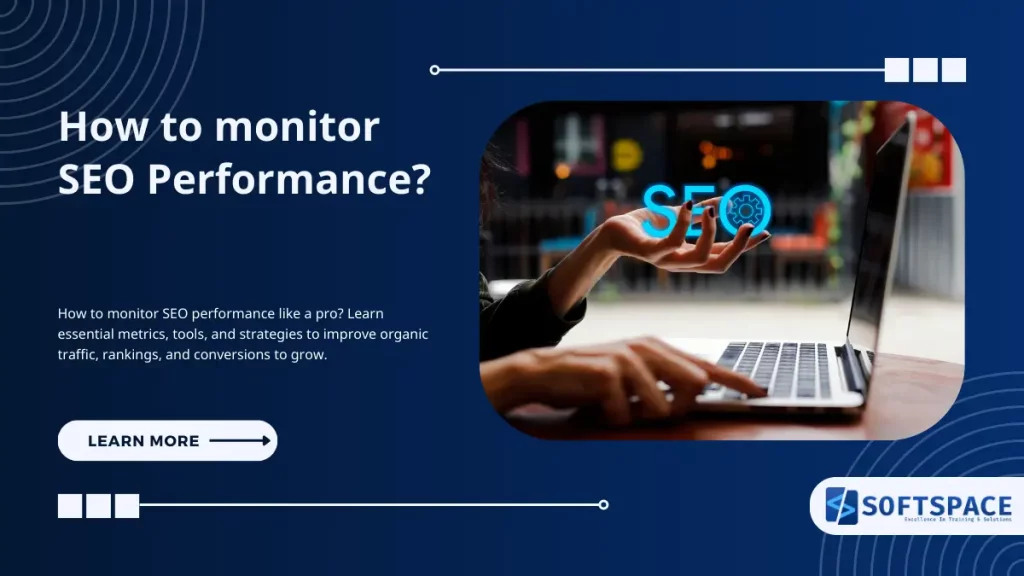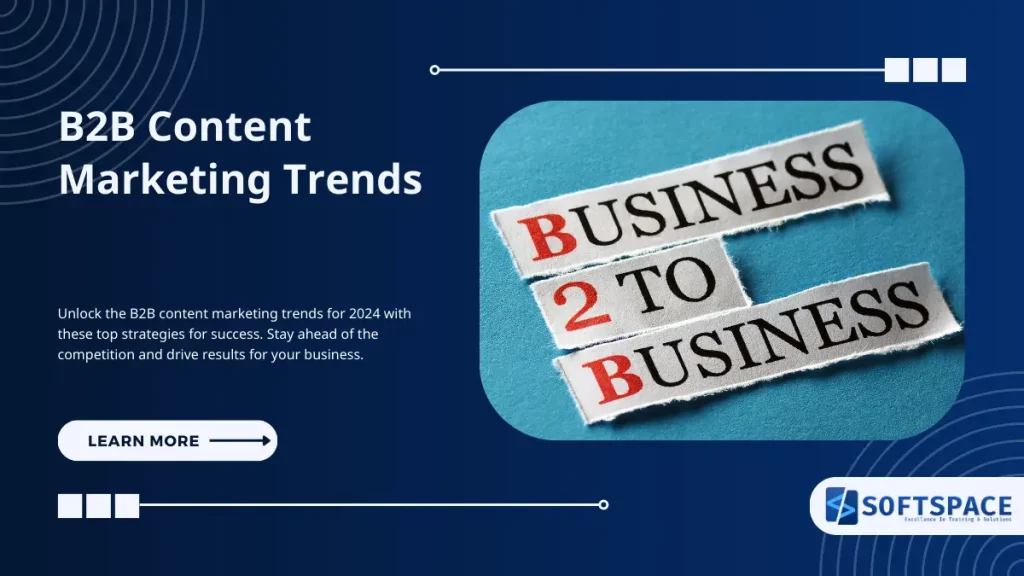How to Monitor SEO Performance in 2025?
Monitor SEO performance by tracking 12 key metrics with Google Analytics 4, Google Search Console, and AI-powered SEO tools. Pay attention to organic traffic, keyword rankings, conversions, Core Web Vitals, and new AI visibility metrics.
Do weekly quick checks, monthly detailed analysis, and quarterly strategic reviews. In 2025, also keep an eye on your content’s performance in AI Overviews, ChatGPT responses, and voice search results for complete visibility tracking.
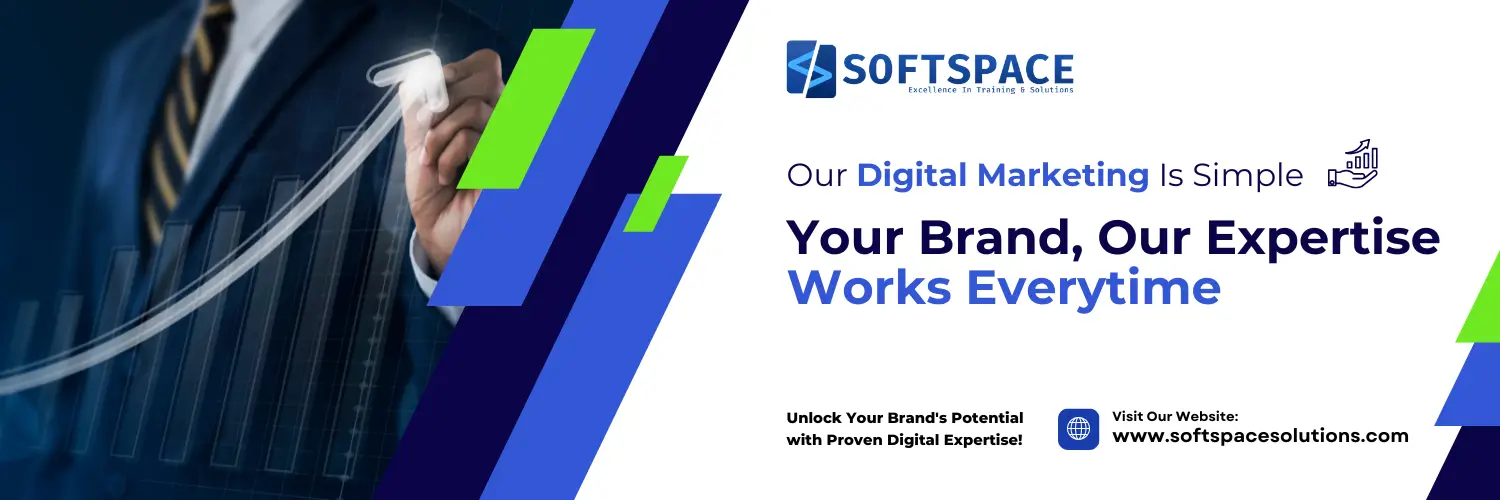
How to monitor SEO performance in 2025 and why?
SEO monitoring has changed from simple ranking checks. In 2025’s AI-driven search environment, businesses must track performance across traditional search engines, AI platforms, and voice assistants to stay competitive.
The High Cost of Not Monitoring SEO
Without proper SEO monitoring, businesses risk:
- Missing algorithm updates that could cost traffic by 50-80%
- Losing market share to competitors who change faster
- Wasting marketing budgets on unproductive strategies
- Failing to seize trending opportunities
- Technical issues going unnoticed for months
ROI Impact of Effective SEO Monitoring
Companies with a solid SEO monitoring system report:
- 73% faster response to algorithm changes
- 45% better ROI from SEO investments
- 2.5 times higher organic traffic growth year-over-year
- 60% reduction in technical SEO issues
- 38% improvement in conversion rates
2025 Search Landscape Changes
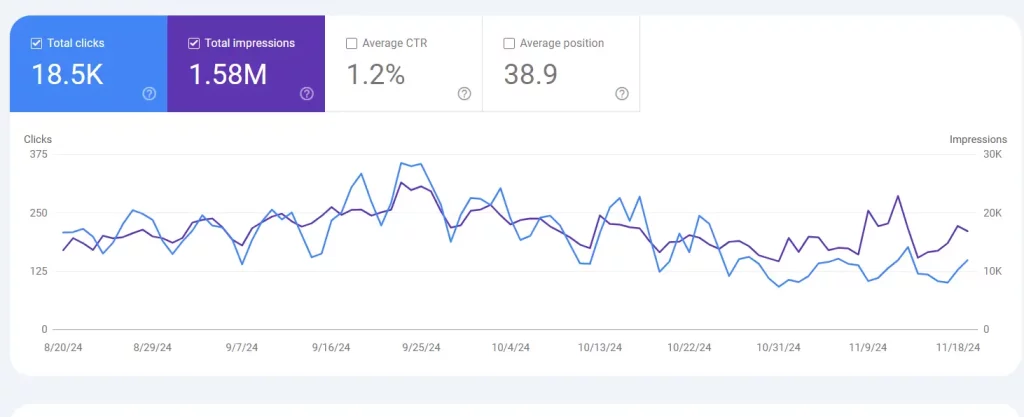
The search ecosystem has changed dramatically.
- AI Overviews appear in 13% of all Google searches
- Voice search makes up 27% of mobile queries.
- Zero-click searches account for 65% of Google searches.
- AI chatbots answer more than 400 million user queries each week.
- Visual search grows by 27% each year.
12 Essential SEO Metrics for 2025
Track these critical metrics to optimize your search engine performance in the AI-driven era
| Metric | Importance | What It Measures | Why It Matters | Tracking Tools | 2025 Benchmark | Frequency |
|---|---|---|---|---|---|---|
|
1
Organic Traffic Performance
Visitors from unpaid search results
|
Critical | Number of visitors arriving through search engines without paid advertising | Direct indicator of SEO success and content relevance. Higher organic traffic means better rankings and user trust. | Google Analytics 4, Google Search Console | 20-30% YoY Growth | Weekly |
|
2
Keyword Rankings & Visibility
Position for target keywords in SERPs
|
Critical | Your website’s position for target keywords in search engine results pages | Higher rankings typically correlate with increased organic traffic and brand visibility. | Google Search Console, SEMrush, Ahrefs | Top 3 positions for target keywords | Weekly |
|
3
Conversion Rate from Organic Traffic
Percentage of organic visitors converting
|
Critical | Percentage of organic visitors completing desired actions (purchases, signups, etc.) | Measures revenue impact of SEO efforts, not just traffic volume. Quality over quantity focus. | Google Analytics 4, conversion tracking | 2-5% average conversion rate | Monthly |
|
4
Core Web Vitals & Page Experience
User experience and loading performance
|
Critical | Loading speed (LCP), interactivity (INP), visual stability (CLS) | Direct Google ranking factor. Poor performance negatively impacts rankings and user satisfaction. | PageSpeed Insights, Google Search Console | LCP <2.5s, INP <200ms, CLS <0.1 | Weekly |
|
5
Click-Through Rate (CTR)
Clicks vs impressions ratio
|
High | Percentage of users clicking your link after seeing it in search results | Indicates title tag and meta description effectiveness. Higher CTR signals relevance to Google. | Google Search Console | Position 1: 27-35%, Position 2-3: 15-25% | Weekly |
|
6
SERP Features Presence
Featured snippets, rich results visibility
|
High | Presence in featured snippets, knowledge panels, image packs, and other SERP features | Higher visibility and traffic potential beyond traditional rankings. Zero-click search optimization. | Google Search Console, SEMrush, Ahrefs | 5+ featured snippet captures | Monthly |
|
7
Backlink Profile Health
Quality and quantity of external links
|
High | Number, quality, and relevance of websites linking to your content | Major ranking factor. Quality backlinks increase domain authority and drive referral traffic. | Ahrefs, SEMrush, Google Search Console | 10-20% monthly link growth | Monthly |
|
8
Technical SEO Health Score
Website technical foundation
|
High | Crawlability, indexability, mobile-friendliness, security, and site structure | Foundation for all SEO efforts. Technical issues prevent proper indexing and ranking. | Google Search Console, Screaming Frog, SEMrush | 95%+ technical health score | Weekly |
|
9
User Engagement Signals
Time on page, bounce rate, interactions
|
Medium | Session duration, pages per session, bounce rate, scroll depth, return visitors | Google considers engagement as ranking factor. Higher engagement indicates content relevance and quality. | Google Analytics 4 | <40% bounce rate, >2min avg session | Monthly |
|
10
Local SEO Performance
Local search visibility and GMB metrics
|
Medium | Google Business Profile views, local keyword rankings, reviews, citations | Critical for local businesses. Local search represents 46% of all Google searches. | Google Business Profile, BrightLocal, Moz Local | Top 3 local pack positions | Monthly |
|
11
Voice Search Optimization
Performance for voice queries
|
Medium | Featured snippet captures, question-based rankings, conversational query performance | Voice search represents 27% of mobile queries. Often reads featured snippet content aloud. | Answer the Public, SEMrush, Google Search Console | 10+ question keyword rankings | Monthly |
|
12
AI Visibility Metrics (New 2025)
Presence in AI-generated responses
|
High | Citations in ChatGPT, Google AI Overviews, Perplexity, and other AI platforms | AI platforms handle 400+ million weekly queries. Critical for future search visibility. | Brand24, Mention, manual monitoring | 5+ monthly AI citations | Monthly |
1. Organic Traffic Performance
What it Measures: Visitors arriving through unpaid search results.
Why it Matters: It shows how well your SEO efforts and content resonate with your target audience.
How to Track?
- Google Analytics 4: Go to
Reports > Acquisition > Traffic Acquisition, then filter by “Organic Search.” - Google Search Console: Navigate to
Performance > Search Results > Total Clicks.
2025 Benchmark
- Aim for 20-30% annual growth in organic traffic.
Key Actions
- Check weekly for sudden drops (possible algorithm updates).
- Break down traffic by device, location, and landing pages.
- Compare traffic to previous periods and seasonal trends.
- Measure traffic quality using engagement metrics like bounce rate and time on page.
2. Keyword Rankings & Visibility
Your website’s position for target keywords in search engine results.
Higher rankings generally lead to more organic traffic and improved visibility.
How to Track:
- Google Search Console:
Performance > Search Results > Average Position - Third-party tools: SEMrush, Ahrefs, Moz
2025 Focus Areas:
- Question-based keywords (e.g., How, What, Why queries)
- Long-tail conversational search phrases
- Local search variations
- Keywords optimised for voice search
3. Conversion Rate from Organic Traffic
The percentage of organic visitors who complete desired actions (like purchases or sign-ups).
It ties SEO performance to revenue, not just traffic numbers.
How to Track:
- Google Analytics 4: Go to
Reports > Engagement > Conversions - Set up conversion events like:
- Purchases
- Newsletter sign-ups
- Downloads
- Contact form submissions
2025 Optimisation Tips:
- Track micro-conversions like content downloads and email opt-ins
- Analyse conversion paths from first search to final action
- Compare conversion rates based on keyword intent (informational vs. commercial)
4. Core Web Vitals & Page Experience
User experience metrics such as loading speed, interactivity, and visual stability.
Google uses these metrics to rank websites and assess user satisfaction.
Key Metrics:
- Largest Contentful Paint (LCP): Under 2.5 seconds
- First Input Delay (FID): Under 100ms
- Cumulative Layout Shift (CLS): Under 0.1
- Interaction to Next Paint (INP): Under 200ms
How to Track:
- Google Search Console: Core Web Vitals report
- PageSpeed Insights: Real-world performance data
- Google Analytics 4: Set up custom Web Vitals reports
5. Click-Through Rate (CTR) Optimisation
The percentage of users who click your site link in search results.
It reflects how effective your title tags and meta descriptions are.
2025 CTR Benchmarks:
- Position 1: 27–35%
- Position 2–3: 15–25%
- Position 4–10: 5–15%
Improvement Strategies:
- A/B test title tags with emotional triggers
- Include the current year and power words in titles
- Craft meta descriptions with clear value propositions
- Use schema markup to trigger rich snippets
6. Search Engine Results Page (SERP) Features
Your appearance in SERP features like featured snippets, image packs, and knowledge panels.
It expands your visibility beyond traditional rankings.
SERP Features to Track:
- Featured snippets (paragraphs, lists, tables)
- “People Also Ask” boxes
- Image pack inclusions
- Video results
- Local pack appearances
- Knowledge panel mentions
Optimisation Tips:
- Structure content to directly answer specific questions
- Use bullet points and numbered lists
- Include high-quality images with descriptive alt text
- Build FAQ sections targeting long-tail and question-based keywords
7. Backlink Profile Health
The quantity, quality, and relevance of websites linking to your content.
A strong backlink profile is a major factor in SEO rankings and domain authority.
Key Backlink Metrics:
- Total referring domains
- Domain authority of linking sites
- Diversity of anchor text
- Link growth rate over time
- Percentage of toxic or spammy links
How to Monitor:
- Google Search Console: Links > External Links
- Ahrefs: Track and analyse backlinks
- SEMrush: Use the Backlink Audit tool
8. Technical SEO Health Score
The technical integrity of your site, including crawlability, indexing, and site structure.
A strong technical foundation supports all other SEO and UX efforts.
Critical Technical Elements:
- Proper XML sitemap submission (no errors)
- Robots.txt correctly configured
- Fix 404 errors and redirect chains
- Ensure full mobile-friendliness
- Valid SSL certificate (HTTPS)
- Proper structured data (schema markup)
Monitoring Tools:
- Google Search Console: Coverage and Mobile Usability reports
- Screaming Frog: Deep technical crawl of your website
- SEMrush Site Audit: Comprehensive technical health score and recommendations
9. User Engagement Signals
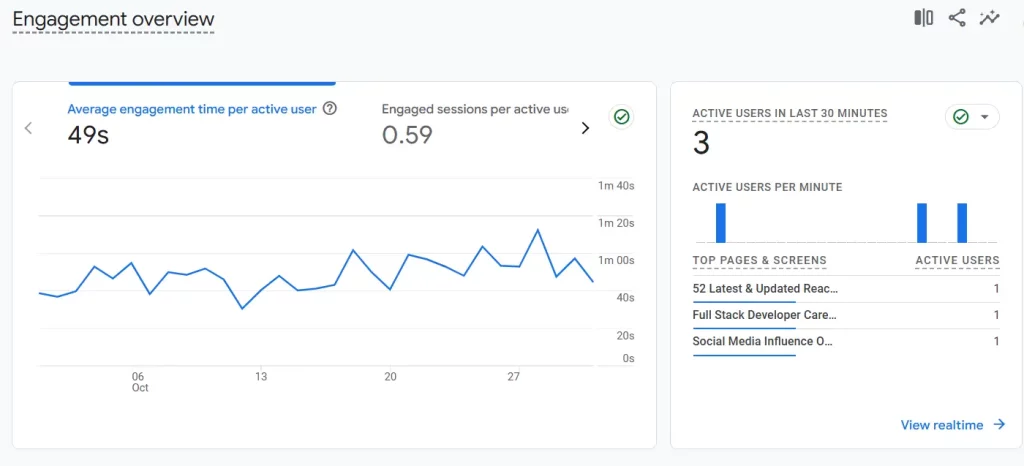
How users interact with your content after finding it through search.
Google views engagement as a ranking factor, so higher interaction levels may contribute to better visibility.
Key Engagement Metrics:
- Average session duration
- Pages per session
- Bounce rate
- Scroll depth
- Return visitor rate
2025 Engagement Optimization:
- Create interactive content elements
- Implement internal linking strategies
- Use video content to increase time on page
- Optimize for featured snippets to reduce bounce rate
10. Local SEO Performance (For Local Businesses)
Visibility in local search results and the performance of your Google Business Profile.
This is critical for businesses that serve local markets and want to attract nearby customers.
Local SEO Metrics:
- Google Business Profile views and clicks
- Local keyword rankings
- Reviews and ratings
- Local citation consistency
- “Near me” search visibility
11. Voice Search Optimisation
Performance for voice-activated queries.
Voice search accounts for 27% of mobile search queries, making it essential for mobile-first SEO strategies.
Voice Search Metrics:
- Featured snippet captures, which are often read aloud
- Question-based keyword rankings
- Conversational query performance
- Local voice search visibility
12. AI Visibility Metrics (New for 2025)
How often does your content appear in AI-generated responses?
AI platforms handle over 400 million queries each week, and gaining visibility here is key to future-proofing your SEO strategy.
AI Visibility Tracking:
- Citations in ChatGPT responses
- Inclusion in Google AI Overviews
- Mentions in Perplexity and other AI search engines
- Source attribution frequency
Best SEO Monitoring Tools for 2025
| Tool Name | Official Website | Use | Pricing |
|---|---|---|---|
|
1
Ahrefs
|
ahrefs.com | Comprehensive SEO toolkit for backlink analysis, keyword research, site audits, and content research. | Free Webmaster Tools; Paid plans from $129/mo (Basic) |
|
2
SEMrush
|
semrush.com | All-in-one platform offering keyword research, site audits, rank tracking, competitor & backlink monitoring. | Free limited access; Paid plans from $139.95/mo (Pro) |
|
3
Screaming Frog
|
screamingfrog.co.uk | Website crawler identifying SEO issues like broken links, duplicate content, metadata problems. | Free limited crawl; Paid $259/year unlimited crawl |
|
4
SimilarWeb
|
similarweb.com | Website analytics for performance, traffic insights, audience demographics, and competitive analysis. | Free basic; Starter $125/mo; Professional $333/mo; Enterprise on request |
|
5
Ubersuggest
|
neilpatel.com/ubersuggest | Backlink analysis, site audits, keyword research, content ideas; beginner-friendly. | Free plan; Individual $120/yr; Business $200/yr; Enterprise $400/yr |
|
6
Moz Pro
|
moz.com | Site audits, link building, keyword research, domain & page authority metrics. | Free limited tools; Paid plans from $49/mo (Starter) |
|
7
Google Search Console
|
search.google.com | Free monitoring of site performance, indexing, CTR, crawl issues, and Google search traffic. | Free |
Free Tools (Essential Starter Kit)
Google Analytics 4 (GA4)
Best for: Traffic analysis, conversion tracking, audience insights.
Key Features:
- Real-time traffic monitoring
- Enhanced e-commerce tracking
- Custom conversion goals
- Audience segmentation
- Cross-platform tracking
Google Search Console (GSC)
Best for: Search performance, technical issues, keyword data.
Key Features:
- Keyword ranking data
- Click-through rates
- Core Web Vitals monitoring
- Index coverage reports
- Mobile usability testing
Google PageSpeed Insights
Best for: Page speed analysis and Core Web Vitals.
Key Features:
- Real-world performance data
- Mobile and desktop analysis
- Actionable optimisation suggestions
- Core Web Vitals scoring
Paid Tools (Professional Monitoring)
SEMrush (Starting at $119/month)
Best for: In-depth SEO analysis and competitor research.
Key Features:
- Position tracking for 500+ keywords
- Technical SEO audit
- Backlink analysis
- Content gap analysis
- Competitor intelligence
Ahrefs (Starting at $99/month)
Best for: Backlink analysis and content research.
Key Features:
- World’s largest backlink database
- Keyword research and ranking tracking
- Content explorer for topic research
- Site audit for technical issues
- Competitor analysis
Moz Pro (Starting at $99/month)
Best for: Complete SEO toolkit with a user-friendly interface.
Key Features:
- Rank tracking and SERP analysis
- Site crawl and technical SEO
- Keyword research and analysis
- Link-building tools
- Local SEO features
AI-Powered SEO Tools (2025 Innovation)
BrightEdge ContentIQ
Best for: AI-driven content optimisation and performance prediction.
Features:
- Content performance forecasting
- AI-powered keyword recommendations
- Real-time optimisation suggestions
MarketMuse
Best for: Content strategy and building topical authority.
Features:
- AI content planning
- Competitive content analysis
- Content optimisation scores
SEO Monitoring in the Age of AI Search
Understanding AI Search Platforms
Google AI Overviews:
- Appears in 13% of search results
- Pull from multiple sources
- Prioritise authoritative, well-structured content
ChatGPT and AI Chatbots:
- 400+ million weekly active users
- Reference recent, credible sources
- Favour comprehensive, factual content
Voice Assistants:
- Often read featured snippet content
- Prefer a conversational, question-and-answer format
- Focus on local and immediate needs
New Metrics for the AI Era
AI Citation Rate
What it measures: Frequency of your content being referenced by AI systems.
How to Track:
- Monitor brand mentions in AI responses
- Track URL citations in AI-generated content
- Use AI monitoring tools like Brand24 or Mention
Answer Completeness Score
What it measures: How thoroughly your content satisfies AI queries.
Optimisation Strategies:
- Create comprehensive, in-depth content
- Include multiple perspectives on topics
- Use clear, scannable formatting
- Provide specific, actionable information
Multi-Modal Performance
What it measures: Content performance across text, voice, and visual searches.
Tracking Methods:
- Voice search keyword rankings
- Image search visibility
- Video search performance
- Featured snippet captures
Optimising Content for AI Citations
Structure for AI Readability
**Use Clear Headers:**
# Main Topic
## Subtopic with Specific Benefit
### Actionable Steps or Details
**Include Direct Answers:**
Question: "How long does SEO monitoring take?"
Answer: "SEO monitoring takes 30 minutes weekly for basic checks, 2-3 hours monthly for detailed analysis, and 1 full day quarterly for comprehensive reviews."
**Provide Context:**
- Define technical terms immediately
- Include relevant statistics and data
- Cite authoritative sources
- Use examples and case studiesHow to monitor SEO performance step by step?
It is a process and a task of ultimate dedication. What to check, what to keep tabs on and what to optimise. All of this continues over time and continuously.
Phase 1: Foundation Setup (Week 1)
Configure Google Analytics 4
Create GA4 Property
Visit analytics.google.com.
Click “Start measuring” or add a new property.
Choose the “Web” platform and enter your website details.
Set Up Enhanced E-commerce (if applicable)
Enable e-commerce reporting in Admin > Data Streams.
Configure purchase events and set up product performance tracking.
Create Custom Conversions
Define macro conversions, such as purchases and leads.
Set up micro conversions, like email signups and downloads.
Configure goal values to support ROI calculation.
Verify Google Search Console
Add and Verify Property
Visit search.google.com/search-console.
Add both the www and non-www versions of your website.
Verify using an HTML tag or a DNS record.
Submit XML Sitemap
Generate a sitemap using Yoast SEO or a similar tool.
Submit it via GSC > Sitemaps.
Monitor for indexing errors.
Configure Settings
Set the preferred domain version, connect GSC to Google Analytics, and enable email notifications for critical issues.
Phase 2: Tool Integration (Week 2)
Choose a Paid SEO Tool
- For Small Businesses: Consider Moz Pro or SEMrush.
- For Enterprises: Use Ahrefs or BrightEdge.
Set Up Rank Tracking
Add a list of 50–100 target keywords.
Include competitor tracking and set up location-based tracking.
Configure Site Audit
Run an initial technical SEO audit.
Schedule weekly automated scans.
Prioritise critical issues for immediate resolution.
Phase 3: Monitoring Dashboard Creation (Week 3)
Build Custom Dashboards
Google Analytics 4 Dashboard
- Organic traffic trends
- Top landing pages from organic search
- Conversion rates by traffic source
- Goal completions and values
Google Search Console Dashboard
- Top performing queries
- Average position trends
- Click-through rates (CTR)
- Core Web Vitals status
Third-Party SEO Tool Dashboard
- Keyword ranking changes
- Competitor position movements
- Backlink growth metrics
- Technical issue alerts
Phase 4: Automated Reporting (Week 4)
Set Up Automated Alerts
Google Analytics Alerts
- 20% decrease in organic traffic (weekly)
- 50% increase in bounce rate (daily)
- New goal completions (daily)
Google Search Console Alerts
- New critical coverage issues
- Manual action notifications
- Significant ranking changes
Third-Party Tool Alerts
- Keyword ranking drops for the top 10 keywords
- New backlink acquisitions
- Technical SEO score changes
SEO Monitoring Schedule
Weekly Quick Health Check (30 Minutes)
Monday Morning SEO Pulse Check
Google Analytics 4 Review (10 minutes)
- Monitor organic traffic vs. the previous week
- Identify top-performing content
- Review conversion rates from organic traffic
- Detect unusual traffic spikes or drops
Google Search Console Review (10 minutes)
- Check for new coverage issues
- Review Core Web Vitals
- Identify new keyword opportunities
- Monitor CTR changes
Technical Health Scan (10 minutes)
- Test website load speed using PageSpeed Insights
- Verify SSL certificate status
- Check mobile-friendliness
- Monitor 404 errors via GSC
Key Weekly KPIs to Track
- Organic traffic: Target 5% week-over-week growth
- Average keyword position: Monitor top 20 keywords
- Core Web Vitals: Ensure all metrics are in the “Good” range
- Indexing status: Achieve 95%+ successful indexing
Monthly Deep Dive Analysis (2–3 Hours)
First Monday of Each Month
Comprehensive Traffic Analysis (45 minutes)
- Compare month-over-month organic traffic
- Analyse traffic by device, location, and demographics
- Identify seasonal trends
- Review top converting keywords and pages
Content Performance Review (45 minutes)
- Highlight top-performing content
- Review engagement metrics (time on page, bounce rate)
- Discover content gaps and opportunities
- Analyse internal linking effectiveness
Technical SEO Audit (30 minutes)
- Run a full site crawl with Screaming Frog
- Address critical technical issues
- Review structured data implementation
- Check for duplicate content
Competitor Analysis (30 minutes)
- Compare keyword rankings with the top 3 competitors
- Review competitor content strategies
- Analyse backlink acquisitions
- Identify competitive threats or opportunities
Quarterly Strategic Review (1 Full Day)
First Week of Each Quarter
Comprehensive SEO Health Assessment (2 hours)
- Conduct a full technical SEO audit
- Review conversion funnel performance
- Analyse user behaviour
- Evaluate content strategy effectiveness
Competitive Landscape Analysis (2 hours)
- Perform in-depth competitor keyword analysis
- Review the content strategies of leading competitors
- Analyse backlink gaps
- Benchmark against industry standards
Strategy Planning and Goal Setting (2 hours)
- Define next quarter’s SEO objectives
- Develop a content calendar based on keyword research
- Allocate resources for technical improvements
- Refine strategy to reflect algorithm updates
Reporting and Stakeholder Communication (2 hours)
- Create a detailed performance report
- Present findings to stakeholders
- Secure approval for upcoming initiatives
- Update internal SEO documentation and processes
Common SEO Monitoring Mistakes to Avoid in 2025
Mistake #1: Focusing Only on Rankings
The Problem: Rankings don’t always correlate with business success. The Solution: Prioritise conversion-focused metrics
Better Approach:
- Track organic traffic quality, not just quantity
- Monitor conversion rates from different keyword types
- Analyse user engagement and behaviour metrics
- Focus on revenue-generating keywords
Mistake #2: Ignoring AI Search Platforms
The Problem: Missing 40% of search traffic from AI platforms. The Solution: Monitor cross-platform visibility
2025 Monitoring Strategy:
- Track citations in AI Overviews
- Monitor ChatGPT and Perplexity mentions
- Optimise for voice search queries
- Create AI-friendly content formats
Mistake #3: Over-Relying on Automated Tools
The Problem: Missing context and nuanced insights. The Solution: Combine automation with human analysis
Balanced Approach:
- Use tools for data collection and alerts
- Apply human judgment for strategic decisions
- Validate tool data with manual checks
- Consider qualitative factors alongside quantitative metrics
Mistake #4: Not Monitoring Page Experience Signals
The Problem: Ignoring Google’s emphasis on user experience. The Solution: Prioritise Core Web Vitals and UX metrics
Critical UX Metrics:
- Core Web Vitals scores
- Mobile usability issues
- Intrusive interstitial problems
- HTTPS implementation
- Safe browsing status
Mistake #5: Insufficient Frequency of Monitoring
The Problem: Missing critical issues or opportunities
The Solution: Implement tiered monitoring frequency
Optimal Monitoring Schedule:
- Daily: Automated alerts for critical issues
- Weekly: Basic performance review and quick fixes
- Monthly: Comprehensive analysis and strategy adjustments
- Quarterly: Strategic planning and competitive analysis
Advanced SEO Monitoring Strategies for 2025
AI-Powered Predictive Analytics
Implementing Machine Learning for SEO Forecasting
Traffic Prediction Models: Use Google Analytics Intelligence or third-party tools to predict:
- Seasonal traffic patterns
- Impact of algorithm updates
- Content performance forecasts
- Conversion rate trends
Keyword Opportunity Scoring: Develop custom scoring systems that consider:
- Search volume trends
- Competition difficulty
- User intent alignment
- Conversion potential
- AI visibility likelihood
Cross-Platform Performance Tracking
Unified SEO Dashboard Creation
Data Sources to Integrate:
- Google Analytics 4 (traffic and conversions)
- Google Search Console (search performance)
- Social media analytics (social search)
- AI platform monitoring (ChatGPT, Perplexity)
- Video platform analytics (YouTube, TikTok)
Custom Metrics Development:
**Unified Visibility Score:**
(Traditional SERP Presence × 0.4) +
(AI Platform Citations × 0.3) +
(Social Search Visibility × 0.2) +
(Voice Search Performance × 0.1) =
Total Visibility ScoreEnterprise-Level SEO Monitoring
Large Website Monitoring Strategies
Segment-Based Analysis:
- Product category performance
- Geographic region analysis
- User journey stage optimisation
- Device-specific strategies
Automated Anomaly Detection:
- Set up machine learning alerts for unusual patterns
- Create threshold-based notifications
- Implement traffic spike investigation protocols
- Develop automated competitor monitoring
Local SEO Monitoring (Multi-Location Businesses)
Scalable Local Performance Tracking
Location-Specific Metrics:
- Google Business Profile performance per location
- Local keyword rankings by city/region
- Review sentiment and response rates
- Local citation consistency scores
Automated Local Reporting:
- Daily local ranking checks
- Weekly review response monitoring
- Monthly local content performance
- Quarterly local market analysis
Frequently Asked Questions About SEO Monitoring
What should I check first when monitoring SEO?
Start with organic traffic in Google Analytics 4 to identify any significant changes. Then check Google Search Console for keyword ranking shifts and technical issues. Finally, review Core Web Vitals scores to ensure optimal user experience. This three-step process takes 5 minutes and catches 90% of critical issues.
How often should I monitor my SEO performance?
Check critical metrics weekly (15 minutes), perform detailed analysis monthly (2-3 hours), and conduct comprehensive reviews quarterly (full day). Set up automated alerts for immediate issues like traffic drops over 20% or critical technical errors.
What’s the most important SEO metric to track in 2025?
While organic traffic remains crucial, conversion rate from organic search is increasingly important. In 2025’s AI-driven landscape, also monitor your content’s visibility in AI Overviews and voice search results, as these platforms handle 40% of all searches.
How do I know if my SEO monitoring is effective?
Effective SEO monitoring should help you identify issues before they significantly impact traffic, capitalise on new opportunities within 30 days, and demonstrate clear ROI from SEO investments. If you’re reactive rather than proactive, increase monitoring frequency.
What tools do I need for comprehensive SEO monitoring?
Start with free tools: Google Analytics 4, Google Search Console, and PageSpeed Insights. Add one paid tool (SEMrush, Ahrefs, or Moz) for competitor analysis and advanced features. Budget $100-300/month for professional monitoring capabilities.
How do I track SEO performance for AI search platforms?
Monitor brand mentions in AI-generated responses, track URL citations in AI content, and use social listening tools to identify AI platform references. Create FAQ-style content and direct-answer formats to increase AI citation likelihood.
What should I do when I see a sudden drop in organic traffic?
First, check Google Search Console for algorithm update impacts or technical issues. Verify that pages are still indexed and ranking. Look for seasonal factors or competitor changes. If the drop exceeds 20% and lasts more than 48 hours, investigate immediately and document your findings.
How do I set realistic SEO monitoring goals?
Base goals on historical performance, industry benchmarks, and business objectives. Typical targets include 20-30% annual organic traffic growth, improving average keyword positions by 5-10 spots, and achieving 95% technical health scores. Adjust based on website age and competition level.
SEO Monitoring Checklist: Your Action Plan
Immediate Setup (This Week)
- Install Google Analytics 4 and configure conversion tracking
- Verify Google Search Console property and submit sitemap
- Choose and set up one paid SEO monitoring tool
- Create a basic monitoring dashboard with key metrics
- Set up automated alerts for critical issues
Monthly Optimisation Tasks
- Review top-performing content and replicate success factors
- Identify and fix technical SEO issues
- Analyse competitor strategies and adapt accordingly
- Update content based on new keyword opportunities
- Monitor and improve Core Web Vitals scores
Quarterly Strategic Reviews
- Conduct a comprehensive SEO audit
- Analyse ROI from SEO investments
- Update SEO strategy based on algorithm changes
- Plan content calendar for next quarter
- Review and adjust monitoring tools and processes
2025 AI-Era Additions
- Track content citations in AI Overviews
- Monitor ChatGPT and AI platform mentions
- Optimise content for voice search queries
- Create FAQ sections for conversational searches
- Develop AI-friendly content formats
Conclusion: Master SEO Monitoring for 2025 Success
SEO monitoring in 2025 requires a fundamental shift from traditional ranking-focused metrics to comprehensive, multi-platform performance tracking. Success depends on monitoring both conventional search engines and AI-powered platforms while maintaining focus on user experience and conversion optimisation.
The businesses that thrive in 2025’s search landscape will be those that implement systematic monitoring processes, leverage AI-powered insights, and adapt quickly to changing search behaviours. By following this comprehensive guide, you’ll build a monitoring system that not only tracks performance but also drives continuous improvement and business growth.
Key Takeaways:
- Monitor 12 essential metrics across traditional and AI search platforms
- Implement weekly, monthly, and quarterly review cycles
- Use both free tools (GA4, GSC) and paid platforms for comprehensive insights
- Focus on conversion quality, not just traffic quantity
- Optimise content for AI citations and voice search
- Set up automated alerts to catch issues early
- Regularly review and adapt your monitoring strategy
Start implementing these strategies today, and transform your SEO monitoring from a reactive task into a proactive growth driver. Your future organic search success depends on the monitoring foundation you build now.

13+ Yrs Experienced Career Counsellor & Skill Development Trainer | Educator | Digital & Content Strategist. Helping freshers and graduates make sound career choices through practical consultation. Guest faculty and Digital Marketing trainer working on building a skill development brand in Softspace Solutions. A passionate writer in core technical topics related to career growth.

